The Low E key
The low E key is located on the back of the boot joint and is operated by the right thumb.
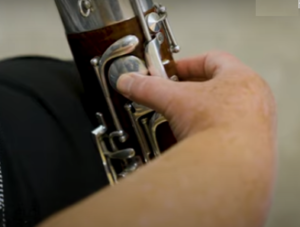
Fingering
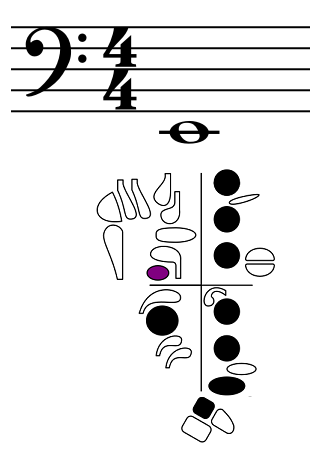
Reminder: The whisper key is optional on this note because the low E/pancake key also moves the whisper-key pad to close the hole on the bocal nub. If leaving the whisper key down simplifies the technique just leave it down. If it makes the passage harder don’t use the whisper key for low E.
Response
When playing low E, make sure:
- the low E key closes whisper-key pad fully against the bocal,
- reed is well soaked and has a tip opening the thickness of a nickel,
- to blow slow, warm air with very open oral cavity and relaxed jaw (“hot pizza mouth”)
- Soft lips on the reed
- all tone holes are completely covered
- low F key (RH pinky) is down for all notes below F natural
- hands and fingers are relaxed and hovering in position when not needed.
Intonation
Low E tends to be a sharp note. To bring the pitch down you will need:
- an open oral cavity (hot pizza mouth),
- to voice a low vowel shape,
- a soft hug with lips,
- lots of space between the teeth.
Play Matching Pitch on Low E to learn how open and relaxed everything needs to be.

Low E practice
Leaving the whisper key down for the entire exercise avoids having to coordinate alternating your left and right thumb activity. Move your right thumb directly from the low E key to the back F# key. Use the front Ab(G#) key to play the G#s with your right pinky.
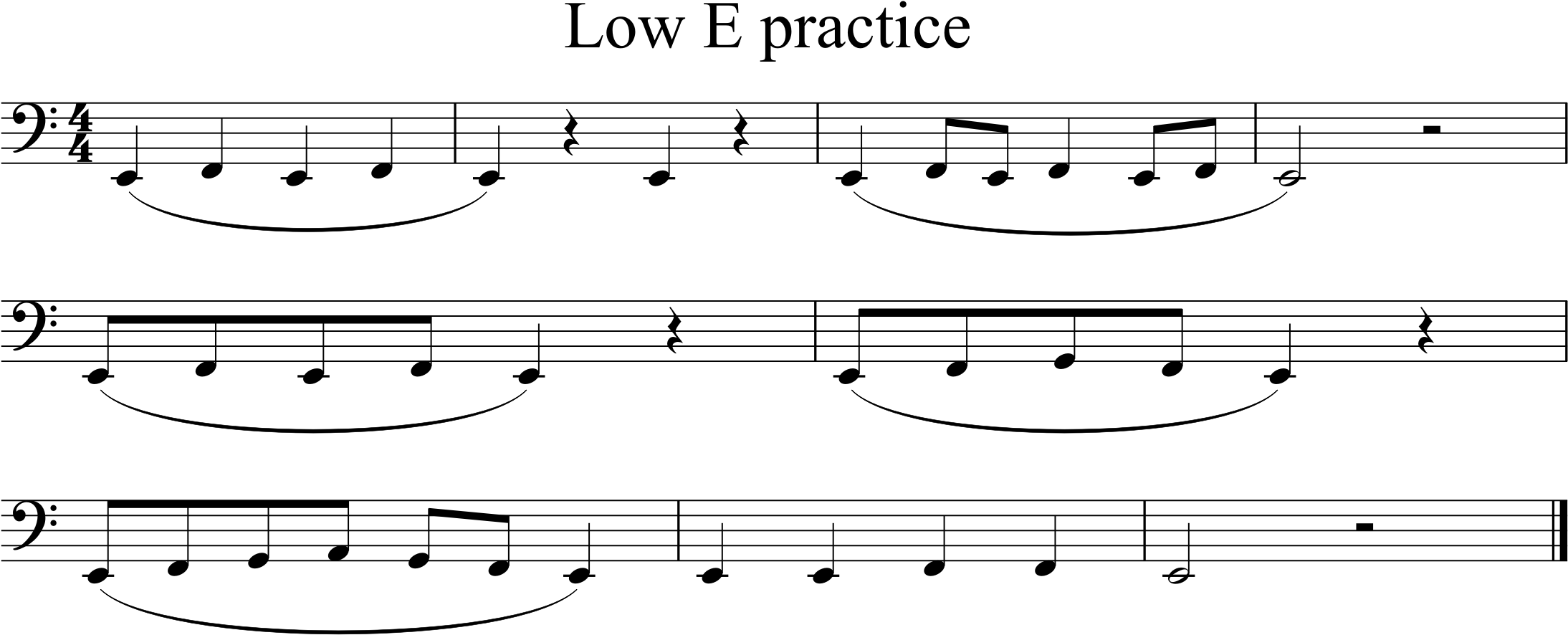
Thumb Slider
Changing the key signature makes a difference. In this tune your right thumb will need to move directly from the low E key to the back F#. Use the front Ab(G#) key to play the G#s with your right pinky.
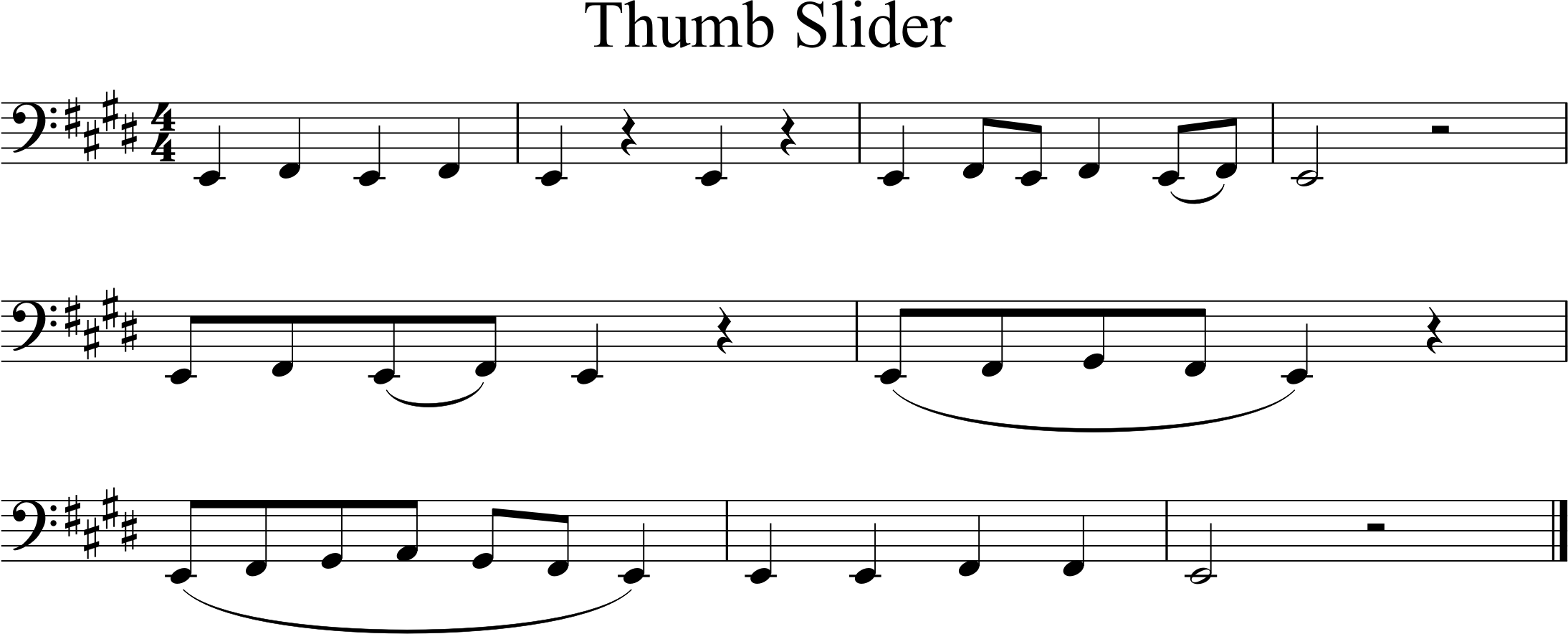
Au Claire de la lune
Using the back F# and front G# works best in this tune too.

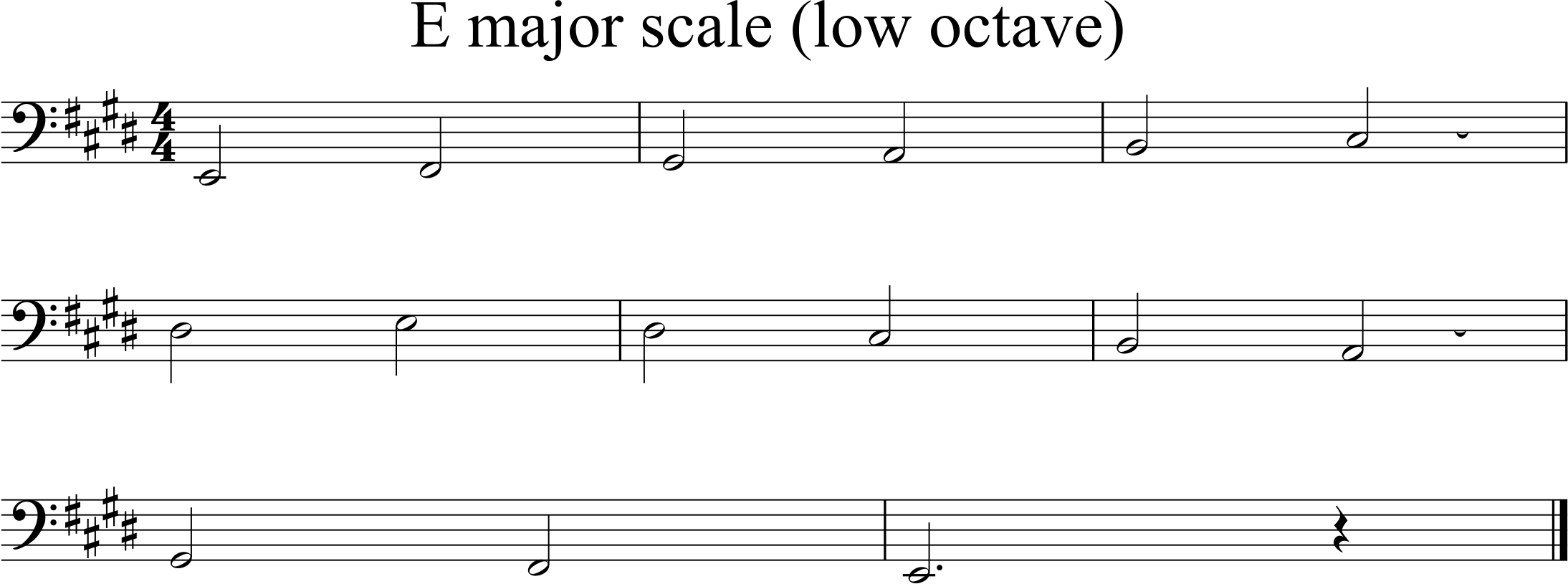
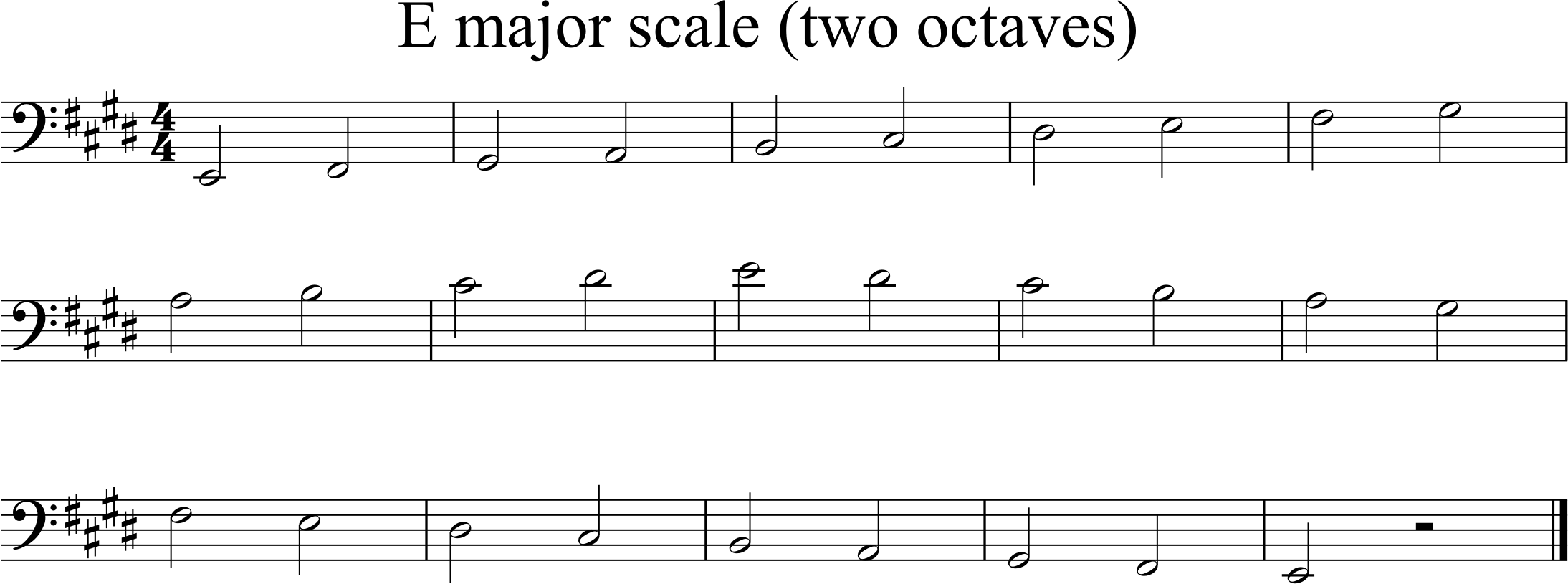


Feedback/Errata